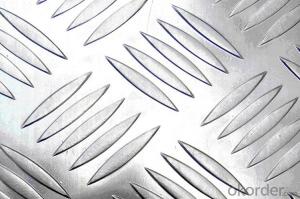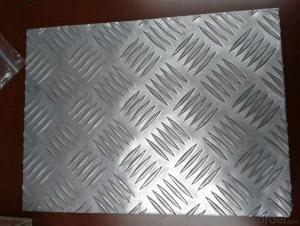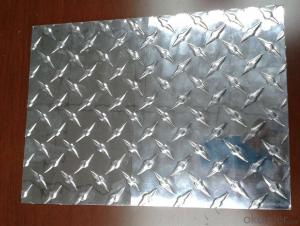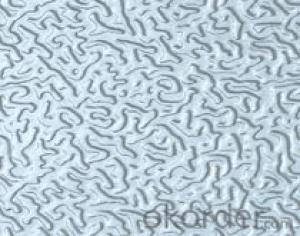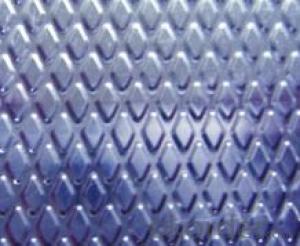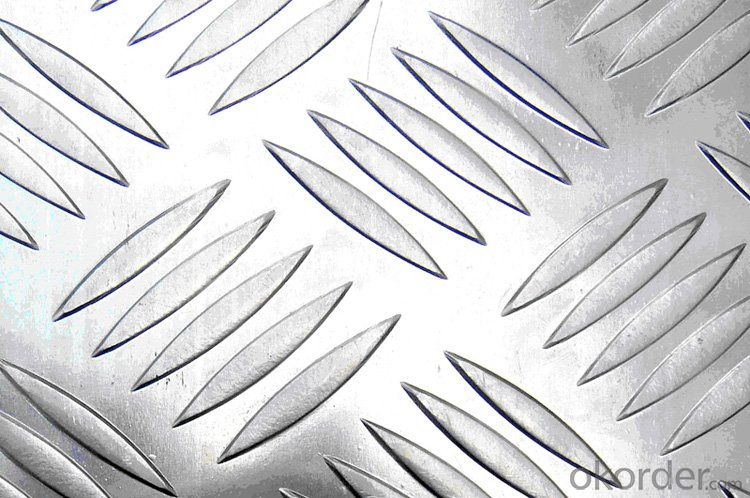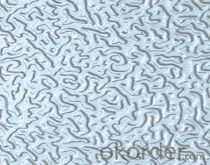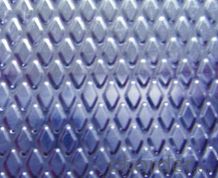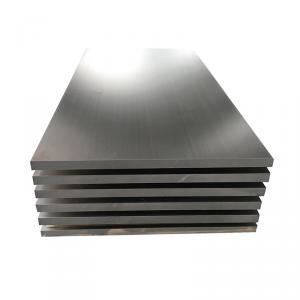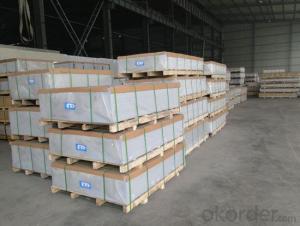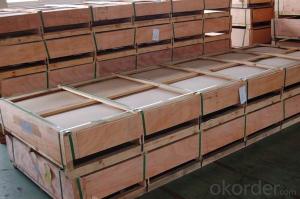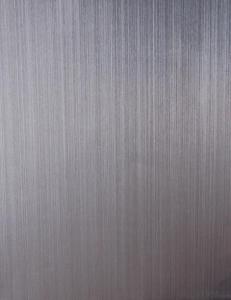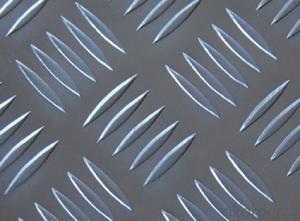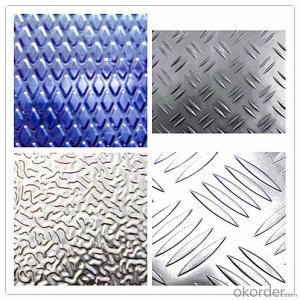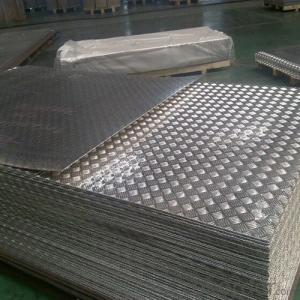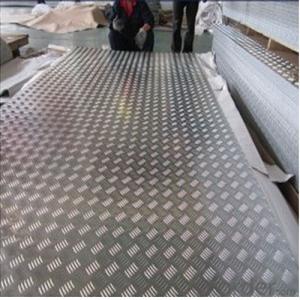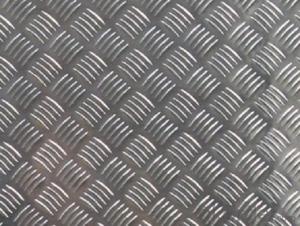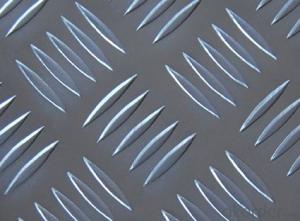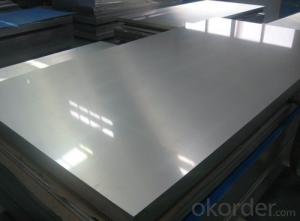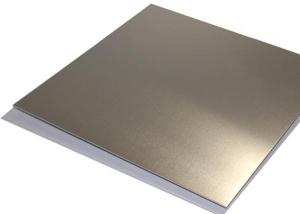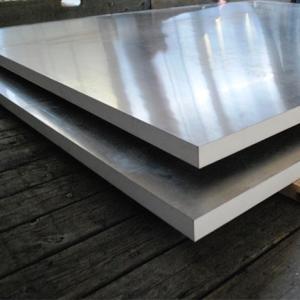Aluminum Plate Sheets - 5 Bars Plate/Tearplate of Good Quality in Hot Sale!
- Loading Port:
- Shanghai
- Payment Terms:
- TT or LC
- Min Order Qty:
- 5 m.t.
- Supply Capability:
- 100000 m.t./month
OKorder Service Pledge
OKorder Financial Service
You Might Also Like
1.Structure of Aluminum 5 Bars Plate/Tearplate of Good quality in Hot Sale:
Aluminum 5 Bars Plate/Tearplate of Good quality in Hot Saleis widely used for decorative purposes in construction, packing and appliance. Aluminum 5 Bars Plate/Tearplate of Good quality in Hot Saleis also very commonly used for anti-shippery purposes in vehicles and pulic places.
2.Main Features of Aluminum 5 Bars Plate/Tearplate of Good quality in Hot Sale:
• Beautiful parten
• Good anti-slippery quanlity
• High manufacturing accuracy
• High strength of extension and yield
• Well packaged
• No marks, no scratch, no excessive oil
3. Aluminum 5 Bars Plate/Tearplate of Good quality in Hot Sale
Alloy: 1050, 1060, 1070, 1100, 3003, 3004, 3005, 3105, 5052, 5083, 5754, 8011, 8006
Temper: H14, H16, H18, H22, H24, H26, H32, O/F
Thickness: 0.2mm-20mm
Width: 10mm-1500mm
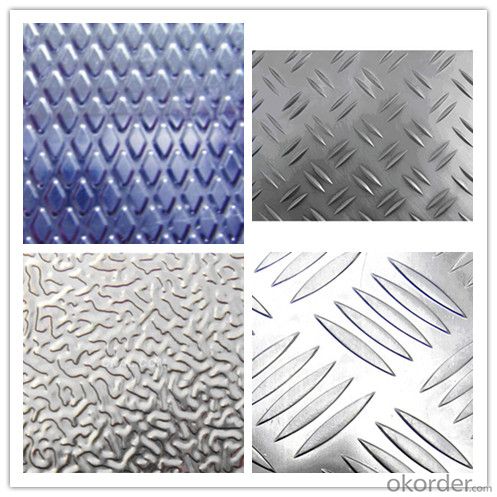
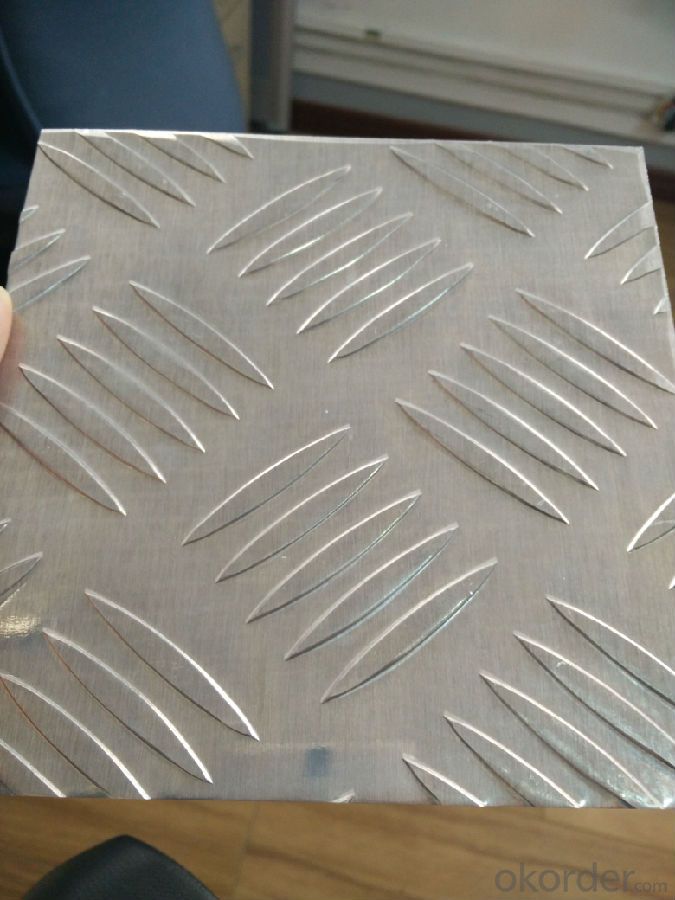
4. Production of Aluminum 5 Bars Plate/Tearplate of Good quality in Hot Sale
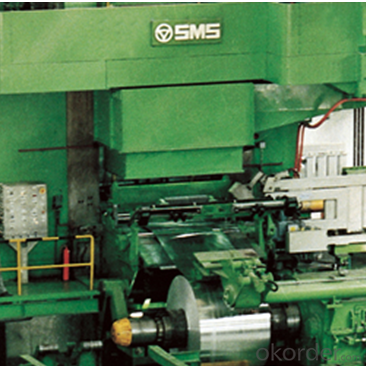
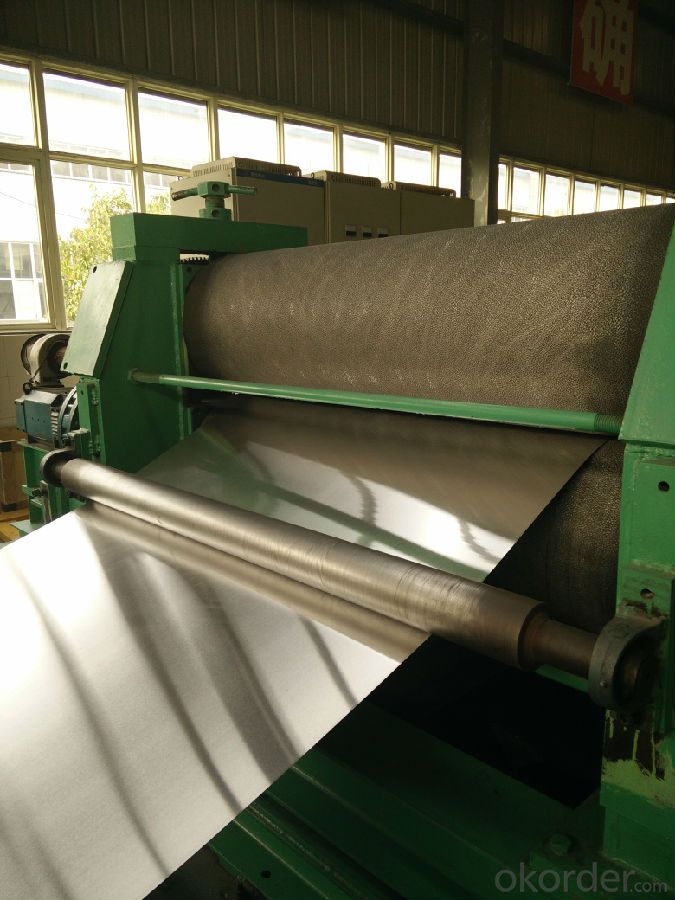
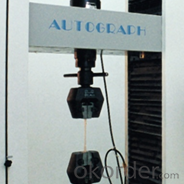
5.FAQ
We have organized several common questions for our clients,may help you sincerely:
① How about your company?
A world class manufacturer & supplier of aluminum coil and alloy blanks. Aluminum production base is comprised of 18 aluminum annealers, 10 coil and foil mills, 4 continuous production lines, 2 hot rolling production line and 3 prepainted lines.
Export 5000 tons per month to Asia, America and Middle East. Always do the best for our clients.
②Can you guarantee the quality of the products?
We are responsible for the quality of materials to get a long-term cooperation with clients in a reasonable period of time and we are glad to arrange and coordinate any third party inspection for you.
③What is the delivery time after purchase?
35 day after receiving client’s deposit or correct LC
- Q: How do 101 aluminum sheets compare in terms of strength and durability?
- The strength and durability of 101 aluminum sheets can be evaluated based on their mechanical properties and performance characteristics. In terms of strength, 101 aluminum sheets possess moderate strength that is suitable for many applications. They have a tensile strength of around 27,000 psi (pounds per square inch) and a yield strength of approximately 21,000 psi. This indicates that they can withstand moderate amounts of stress and load without deforming or breaking. Durability-wise, 101 aluminum sheets have good resistance to corrosion, making them suitable for outdoor and marine applications. They are also highly resistant to various forms of weathering, including UV radiation and extreme temperatures. Their corrosion resistance is mainly due to the presence of a thin, protective oxide layer on the surface, which prevents further oxidation and ensures long-term durability. However, it is important to note that 101 aluminum sheets are not the most durable option available. They are not as strong or durable as some other aluminum alloys, such as 6061 or 7075, which have higher tensile and yield strengths. Hence, if a project requires exceptional strength or durability, it may be beneficial to consider using a different aluminum alloy. In conclusion, 101 aluminum sheets offer moderate strength and good durability, making them suitable for a wide range of applications. However, if the project requires higher strength or exceptional durability, it may be necessary to explore alternative aluminum alloys with superior mechanical properties.
- Q: How does the surface roughness affect the adhesion of coatings on aluminum sheet?
- The surface roughness of an aluminum sheet directly affects the adhesion of coatings. A rough surface provides more contact points and a larger surface area for the coating to adhere to, resulting in better adhesion. Conversely, a smooth surface offers fewer contact points, making it more difficult for the coating to adhere properly. Therefore, increasing the surface roughness of aluminum sheets can significantly improve the adhesion of coatings.
- Q: Does aluminum sheet require special handling during transportation?
- Yes, aluminum sheet does require special handling during transportation. This is because aluminum sheets are lightweight and can be easily damaged if not handled properly. Special precautions need to be taken to prevent scratching, bending, or denting of the sheets. They should be packaged and secured in a way that minimizes movement and provides adequate protection against impacts. Additionally, aluminum sheets should be transported separately from other heavy objects or materials to avoid any potential damage caused by their weight. Overall, special care and attention must be given to ensure the safe transportation of aluminum sheets.
- Q: Are aluminum sheets non-magnetic?
- No, aluminum sheets are not magnetic.
- Q: Would you please tell me what putty to use on the aluminium board, what kind of putty, and the painting process?
- Applied atomic ash.Consider adding an interface agent, that is, applying an interfacial agent on the aluminum plate, and then applying a topcoat on the interface agent after drying.You can also consider adding primer or putty, and then spray paint.In summary, adhesion of the topcoat is reinforced with an agent.
- Q: how to avoid oxidation of aluminum sheet after wire drawing?
- leave it alone after wire drawing!aluminum sheet will formulate a layer of dense oxide film. So you don't need to worry about it! Don't often polish the aluminum wire, or they will be more and more slimsy, the oxide film is used for avoiding reoxidation.
- Q: How do you cut aluminum sheets?
- To cut aluminum sheets, you can use various methods depending on the thickness and size of the sheet. Here are a few common methods: 1. Hand shears: For thin aluminum sheets, hand shears can be effective. These are handheld tools with sharp blades that can cut through the sheet by applying manual force. 2. Power shears: For thicker aluminum sheets, power shears are a better option. These electric or pneumatic tools have powerful blades that can cut through the material with ease. They are especially useful for straight cuts. 3. Jigsaw: A jigsaw with a metal-cutting blade can be used to cut aluminum sheets, especially when you need to make curved or irregular cuts. Make sure to use a blade specifically designed for cutting metal. 4. Circular saw: A circular saw with a carbide-tipped blade can also be used to cut aluminum sheets. This method is suitable for straight cuts and requires the sheet to be clamped securely to avoid vibrations during cutting. 5. CNC cutting: Computer Numerical Control (CNC) machines can be used to accurately cut aluminum sheets into precise shapes and sizes. These machines use computer programs to control the cutting process, making them ideal for complex or repetitive cuts. Before cutting aluminum sheets, ensure you wear appropriate safety gear, such as gloves and safety glasses, to protect yourself from any sharp edges or metal shavings. It is also advisable to secure the sheet firmly in place using clamps or a vise to prevent movement during cutting.
- Q: Can aluminum sheets be used in construction?
- Construction can indeed utilize aluminum sheets. Aluminum, a versatile and lightweight material, possesses numerous advantageous properties for construction purposes. Its corrosion resistance allows for both indoor and outdoor applications. Moreover, aluminum sheets exhibit a high strength-to-weight ratio, granting them durability and strength while remaining relatively lightweight. This characteristic proves advantageous in construction projects where weight is a consideration. Furthermore, aluminum is non-toxic and highly recyclable, making it an environmentally conscious option. When combined with its aesthetic appeal and ease of fabrication, aluminum sheets become a favored choice for a variety of construction applications such as roofing, cladding, wall panels, window frames, and more.
- Q: Can 101 aluminum sheets be used in electrical or electronic components?
- Yes, 101 aluminum sheets can be used in electrical or electronic components. Aluminum is a versatile metal that possesses excellent electrical conductivity and is widely used in various electrical and electronic applications. It is commonly used as a conductor in power transmission lines, electrical cables, and wiring. Additionally, aluminum sheets can be used in the manufacturing of electronic components such as heat sinks, circuit boards, and enclosures due to their lightweight, corrosion-resistant, and thermally conductive properties. However, it is important to note that the specific grade and alloy of aluminum, as well as other factors such as thickness and surface treatment, may also influence its suitability for certain electrical or electronic applications.
- Q: Are aluminum sheets conductive?
- Indeed, aluminum sheets possess conductivity. Being a metal, aluminum exhibits exceptional electrical conductivity. Consequently, aluminum sheets facilitate the smooth passage of electricity, rendering them suitable for an array of applications that necessitate conductivity, including electrical wiring, power transmission lines, and electronic devices.
Send your message to us
Aluminum Plate Sheets - 5 Bars Plate/Tearplate of Good Quality in Hot Sale!
- Loading Port:
- Shanghai
- Payment Terms:
- TT or LC
- Min Order Qty:
- 5 m.t.
- Supply Capability:
- 100000 m.t./month
OKorder Service Pledge
OKorder Financial Service
Similar products
Hot products
Hot Searches
Related keywords
